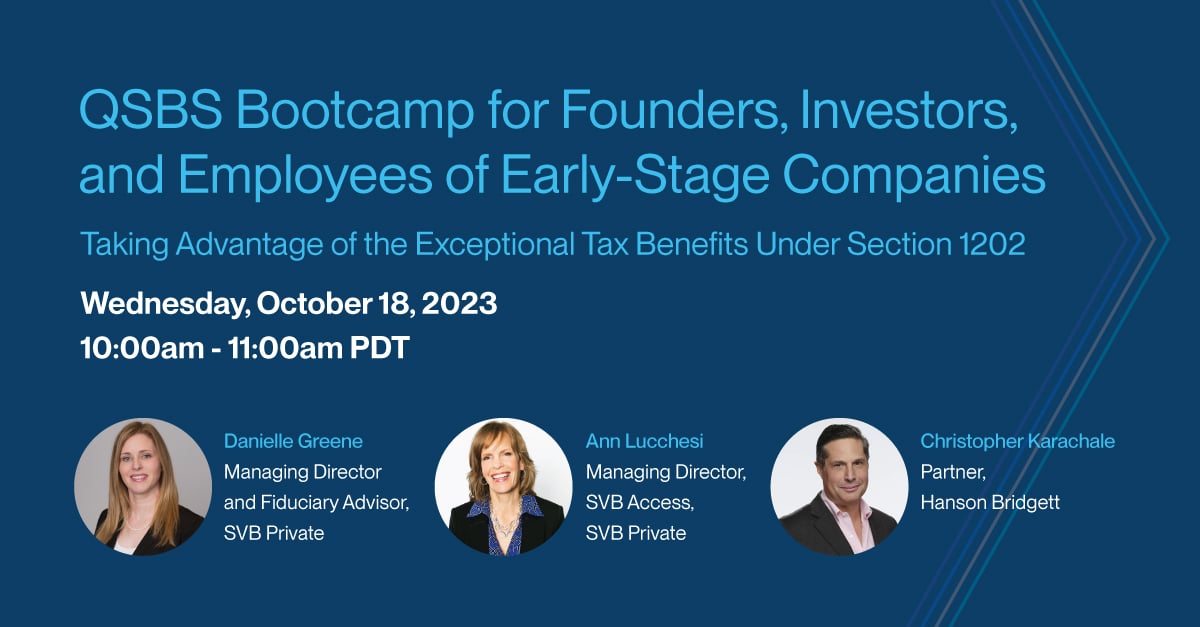We’re pleased to provide you with insights like these from Boston Private. Boston Private is now an SVB company. Together we’re well positioned to offer you the service, understanding, guidance and solutions to help you discover opportunities and build wealth – now and in the future.
Ways and means sets the high-water mark for new tax increases on individuals and businesses
A part of the Washington policy series
The house ways and means committee passed an estimated $3 trillion spending bill as part of President Biden’s Build Back Better Act. To finance these programs, the bill includes roughly $3 trillion in new taxes. Compared to the President’s proposal released in April and discussed in an earlier article, this bill seeks additional tax revenue from individuals, corporations and other business entities.
Below is a summary of a select group of tax proposals included in the Ways and Means bill that may impact individuals, businesses, estates and trusts.
Provisions impacting individuals
Top tax rate increase and expansion. A top marginal tax rate increase from 37% to 39.6%, starting at taxable income above $450,000 for married filing jointly and above $400,000 for single filers and estates and trusts with taxable income over $12,500. For comparison, the existing top marginal tax rate applies to taxable income over $628,300 for married filing jointly and over $523,600 for single filers. The provision is effective 2022.
Capital gains tax rate increase. A top capital gains rate increase from 20% to 25% effective for transactions after September 13, 2021. Capital gains recognized after September 13, 2021 that arise from transactions entered on or before September 13, 2021 pursuant to a written binding contract (and closed before 2022) are subject to the current 20% capital gains rate. The new top capital gains rate will align with the new top marginal tax rate and will take effect for married filing jointly taxpayers with more than $450,000 of taxable income and single taxpayers with more than $400,000 of taxable income.
A 3% surcharge on high-income taxpayers, estates and trusts. A 3% surtax imposed on modified adjusted gross income above $5 million for married filing jointly and single filers, or over $2.5 million for a married individual filing separately. The provision is effective 2022. The surcharge when added to the 39.6% top marginal tax rate in the bill and the 3.8% tax rate on net investment income may result in a top marginal tax rate of 46.4% on very high-income taxpayers. The 3% surcharge would apply to estates and trusts starting at modified adjusted gross income exceeding $100,000.
The 3.8% tax on net investment income is expanded. The existing 3.8% tax on net investment income is expanded to apply to net investment income derived in the ordinary course of a trade or businesses for taxpayers with greater than $400,000 in taxable income (single filer) or $500,000 (joint filers) and expanded to apply to net investment income from trusts and estates.
Increase in carried interest holding period. This proposal would increase the holding period from 3 to 5 years for capital gains treatment related to gains from partnership interests. The provision would retain the three-year holding period for real property trades or businesses and taxpayers with an adjusted gross income of less than $400,000.
Provisions impacting estates and trusts
Unified credit against estate and gift taxes reduced by half. The unified credit against estate and gift taxes would revert to $5 million per taxpayer adjusted for inflation, (down from $11.7 million per taxpayer in 2021). The provision is effective 2022.
Grantor trusts included in the taxable estate. Under the bill, grantor trusts would be included in a decedent’s taxable estate. Distributions from a grantor trust to someone other than the grantor would be treated as a taxable gift from the grantor to the person receiving the distribution. The changes would apply to trusts created on or after the date the bill is enacted, which will be determined once the President signs legislation into law.
Gain on sales of assets to a grantor trusts. Under the existing law, sales of appreciated assets from a grantor to a grantor’s trust would not trigger gain. The bill would require recognition of gain on such sales but not losses. Generally, the proposed changes would apply to grantor trusts, other than revocable trusts, created on or after the legislation is enacted. Existing irrevocable trusts would also be grandfathered, with the exception that gains related to the contribution of assets to a grandfathered trust after the effective date of the provision may be taxed. Additional legislative clarity will be needed to facilitate effective trust planning.
Valuation discounts for nonbusiness assets eliminated. The bill would eliminate the ability to claim a valuation discount for estate and gift tax purposes on transfers of nonbusiness assets like securities. Nonbusiness assets are passive assets held for income generation and not used in the active conduct of business. Assets used in hedging transactions or as business working capital would be excluded. The new valuation approach applies to transfers on or after the date the bill is enacted.
Corporate tax rates
Graduated corporate tax rates reinstated. Graduated corporate tax rates would be reinstated. The bill provides for 18% on the first $400,000 of income, 21% on income up to $5 million and a top rate of 26.5% on income above $5 million. Personal service corporations would not be eligible for the graduated rates. The effective date is tax years beginning after 2021.
IRA and retirement plan provisions
Eliminate Roth conversions for higher income taxpayers. The bill would eliminate Roth conversions in IRAs and employer-sponsored plans (e.g., 401(k)) for single tax filers with adjusted taxable income over $400,000, married taxpayers filing jointly with adjusted taxable income over $450,000 and heads of households with adjusted taxable income over $425,000 (indexed for inflation) effective 2032. The bill would also prohibit the conversion of employee after-tax contributions in qualified retirement plans and IRA to Roth contributions regardless of income, effective 2022.
Prohibit contributions to an IRA for taxpayers with large account balances. The bill prohibits contributions to Roth or traditional IRAs if the total value of an individual’s IRA and defined contribution accounts exceed $10 million as of the end of the prior tax year. The limit on contributions would apply to taxpayers with the same income limits applicable to the provision eliminating Roth conversions noted above. The provision is effective 2022.
Required minimum distributions from large IRA and retirement account balances. Taxpayers with high adjusted taxable income (same thresholds as noted above) for Roth conversions restrictions with total IRA and retirement accounts worth more than $10 million will be subject to required minimum distributions, regardless of age. In addition, taxpayers with high adjusted taxable income and total of IRA and retirement plan account balances exceeding $20 million will be required to take a distribution from their Roth accounts to reduce the total balance to $20 million. These provisions are effective 2022.
If an individual’s combined traditional IRA, Roth IRA and defined contribution retirement account balances generally exceed $10 million at the end of a taxable year, a minimum distribution would be required for the following year. This minimum distribution is only required if the taxpayer’s taxable income is above the thresholds described in the section above (e.g., $450,000 for a joint return). The minimum distribution generally is 50 percent of the amount by which the individual’s prior year aggregate traditional IRA, Roth IRA and defined contribution account balance exceeds the $10 million limit.
Our perspective going forward
While the ways and means proposal is certain to change during the legislative process, we now have specific legislation to begin our evaluation of potential impacts on your financial situation. We will monitor closely and keep you apprised of further legislative developments. In the meantime, please don’t hesitate to reach out to your SVB Private representative with questions or visit our Washington policys series for additional information.















